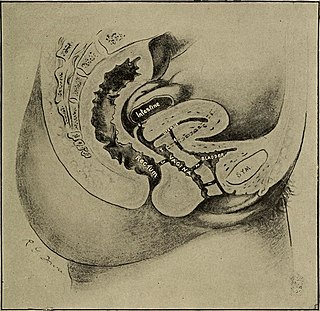
The Songhai people are an ethnolinguistic group in West Africa who speak the various Songhai languages. Their history and lingua franca is linked to the Songhai Empire which dominated the western Sahel in the 15th and 16th century. Predominantly adherents of Islam, the Songhai are primarily located in Niger and Mali within the Western Sudanic region. Historically, the term "Songhai" did not denote an ethnic or linguistic identity but referred to the ruling caste of the Songhay Empire known as the Songhaiborai. However, the correct term used to refer to this group of people collectively by the natives is "Ayneha". Although some Speakers in Mali have also adopted the name Songhay as an ethnic designation, other Songhay-speaking groups identify themselves by other ethnic terms such as Zarma or Isawaghen. The dialect of Koyraboro Senni spoken in Gao is unintelligible to speakers of the Zarma dialect of Niger, according to at least one report. The Songhay languages are commonly taken to be Nilo-Saharan but this classification remains controversial: Dimmendaal (2008) believes that for now it is best considered an independent language family.

Slavery in the British and French Caribbean refers to slavery in the parts of the Caribbean dominated by France or the British Empire.

Slavery in the Spanish American viceroyalties was an economic and social institution which existed throughout the Spanish Empire including Spain itself. Enslaved Africans were brought over to the continent for their labour, indigenous people were enslaved until the 1543 laws that prohibited it.
Nursing assessment is the gathering of information about a patient's physiological, psychological, sociological, and spiritual status by a licensed Registered Nurse. Nursing assessment is the first step in the nursing process. A section of the nursing assessment may be delegated to certified nurses aides. Vitals and EKG's may be delegated to certified nurses aides or nursing techs. It differs from a medical diagnosis. In some instances, the nursing assessment is very broad in scope and in other cases it may focus on one body system or mental health. Nursing assessment is used to identify current and future patient care needs. It incorporates the recognition of normal versus abnormal body physiology. Prompt recognition of pertinent changes along with the skill of critical thinking allows the nurse to identify and prioritize appropriate interventions. An assessment format may already be in place to be used at specific facilities and in specific circumstances.

In 2022, Freedom House rated Nepal’s human rights at 57 out 100, determining the country's status in terms of fundamental freedoms as "partly free".

The Haitian Revolution (1791-1804) and the subsequent emancipation of Haiti as an independent state provoked mixed reactions in the United States. Among many white Americans, this led to uneasiness, instilling fears of racial instability on its own soil and possible problems with foreign relations and trade between the two countries. Among enslaved black Americans, it fueled hope that the principles of the recent American Revolution might be realized in their own liberation.
The First Maroon War was a conflict between the Jamaican Maroons and the colonial British authorities that started around 1728 and continued until the peace treaties of 1739 and 1740. It was led by self-liberated Africans who set up communities in the mountains. The name "Maroon" was given to these Africans, and for many years they fought the British colonial Government of Jamaica for their freedom. The maroons were very skilled, particularly in guerrilla warfare. It was followed about half a century later by the Second Maroon War.
Alexander Falconbridge was a British surgeon who took part in four voyages in slave ships between 1782 and 1787. In time he became an abolitionist and in 1788 published An Account of the Slave Trade on the Coast of Africa. In 1791 he was sent by the Anti-Slavery Society to Granville Town, Sierra Leone, a community of freed slaves, where he died a year later in 1792.
Mental distress or psychological distress encompasses the symptoms and experiences of a person's internal life that are commonly held to be troubling, confusing or out of the ordinary. Mental distress can potentially lead to a change of behavior, affect a person's emotions in a negative way, and affect their relationships with the people around them.
The health of slaves on American plantations was a matter of concern to both slaves and their owners. Slavery had associated with it the health problems commonly associated with poverty. It was to the economic advantage of owners to keep their working slaves healthy, and those of reproductive age reproducing. Those who could not work or reproduce because of illness or age were sometimes abandoned by their owners, expelled from plantations, and left to fend for themselves.

The institution of slavery in North America existed from the earliest years of the colonial history of the United States until 1865 when the Thirteenth Amendment abolished slavery throughout the United States except as punishment for a crime. It was also abolished among the sovereign Indian tribes in Indian Territory by new peace treaties which the US required after the Civil War.

Slavery has historically been widespread in Africa. Systems of servitude and slavery were common in parts of Africa in ancient times, as they were in much of the rest of the ancient world. When the trans-Saharan slave trade, Red Sea slave trade, Indian Ocean slave trade and Atlantic slave trade began, many of the pre-existing local African slave systems began supplying captives for slave markets outside Africa. Slavery in contemporary Africa is still practised despite it being illegal.

Slavery in Portugal existed since before the country's formation. During the pre-independence period, inhabitants of the current Portuguese territory were often enslaved and enslaved others. After independence, during the existence of the Kingdom of Portugal, the country played a leading role in the Atlantic slave trade, which involved the mass trade and transportation of slaves from Africa and other parts of the world to the American continent. The import of slaves was banned in European Portugal in 1761 by the Marquês de Pombal. However, slavery within the African Portuguese colonies was only abolished in 1869.

The treatment of slaves in the United States often included sexual abuse and rape, the denial of education, and punishments like whippings. Families were often split up by the sale of one or more members, usually never to see or hear of each other again.

Slavery in Afghanistan was present in the post-Classical history of Afghanistan, continued during the Middle Ages, and persisted into the 1920s.
A death midwife, or death doula, is a person who assists in the dying process, much like a midwife or doula does with the birthing process. It is often a community based role, aiming to help families cope with death through recognizing it as a natural and important part of life. The role can supplement and go beyond hospice. Practitioners perform a large variety of service, including but not limited to creating death plans, and providing spiritual, psychological, and social support before and just after death. Their role can also include more logistical activities, helping with services, planning funerals and memorial services, and guiding mourners in their rights and responsibilities.

A ureterovaginal fistula is an abnormal passageway existing between the ureter and the vagina. It presents as urinary incontinence. Its impact on women is to reduce the "quality of life dramatically."

Miscarriage and grief are both an event and subsequent process of grieving that develops in response to a miscarriage. Almost all those experiencing a miscarriage experience grief. This event is often considered to be identical to the death of a child and has been described as traumatic. "Devastation" is another descriptor of miscarriage. Grief is a profound, intensely personal sadness stemming from irreplaceable loss, often associated with sorrow, heartache, anguish, and heartbreak. Sadness is an emotion along with grief, on the other hand, is a response to the loss of the bond or affection was formed and is a process rather than one single emotional response. Grief is not equivalent to depression. Grief also has physical, cognitive, behavioral, social, cultural, and philosophical dimensions. Bereavement and mourning refer to the ongoing state of loss, and grief is the reaction to that loss. Emotional responses may be bitterness, anxiety, anger, surprise, fear, and disgust and blaming others; these responses may persist for months. Self-esteem can be diminished as another response to miscarriage. Not only does miscarriage tend to be a traumatic event, women describe their treatment afterwards to be worse than the miscarriage itself.

Slavery in Egypt existed up until the early 20th century. It differed from the previous slavery in ancient Egypt, being managed in accordance with Islamic law from the conquest of the Caliphate in the 7th century until the practice stopped in the early 20th-century, having been gradually abolished in the late 19th century. Slave trade was abolished successively between 1877 and 1884. Slavery itself was not abolished, but it gradually died out after the abolition of the slave trade, since no new slaves could be legally acquired. Existing slaves were noted as late as the 1930s.

Slavery was widely practiced by the Indigenous peoples of the Americas, both prior to European colonisation and subsequently.









